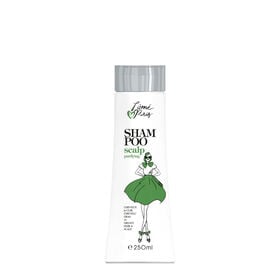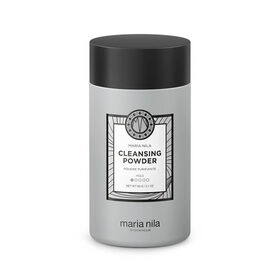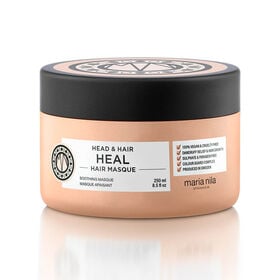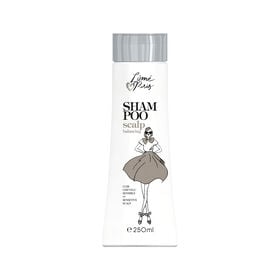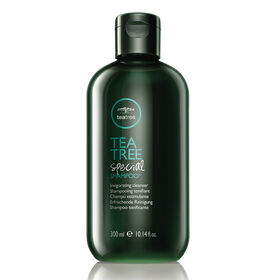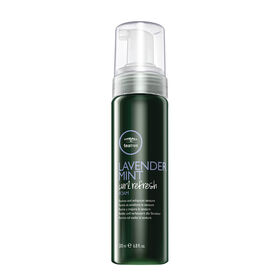How do I treat my oily hair?
The first thing you see after a few days of not washing your is that greasy build-up on your roots. For the most part it’s solved when the time comes for your regular shampoo, but other times it can leave your hair a little worse for wear. If you don’t know where to turn to stop all that grease from building up, we’ve got the answers. From the causes to the products, here are the tips to help you gain a cleansed and grease-free scalp.
What causes oily hair?
To get to the root of the problem we literally have to get to the roots. Oily hair is the result of the sebaceous glands on your scalp producing oils. These oils are actually good for keeping your hair healthy, but too much of it causes that greasy appearance we all know. This can often be made worse by product build-up in your hair. Other causes can include the seasons changing, high level of hormones during period and pregnancy, and vitamin deficiencies.
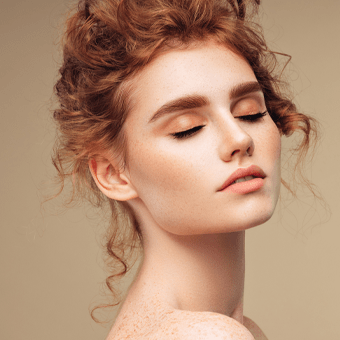
How can I avoid oily or greasy hair?

Change your shampoo
Sometimes the cause to your grease problem is as simple as using the wrong shampoo. If you notice grease in your hair after performing your regular routine, consider including a purifying shampoo for one day in the week. With this small change, you’ll be able to cleanse all impurities from your hair and scalp to leave it free of grease.

Use dry shampoo
It’s important not to wash your hair every day because otherwise you can remove the oils that actually keep your hair strong and healthy. To take care of your greasy roots for those in between times, dry shampoo is be your best friend. When applying, be careful not to over-apply and work through lightly with your fingers. Your hair will instantly look and feel refreshed.

No scratching
We more than understand the temptation to scratch that itch in your hair. However, that can make things worse if you have greasy roots. Why? The bacteria in your nails will end up in your scalp and cause more irritation than before. This will take a bit of getting used to, but a dry shampoo before going out for the day will be the best solution for the time being.

Condition the ends
Everybody wants their hair to look shining and vibrant, but conditioner causes your scalp to look and feel greasy. Also, because the skin is more sensitive on the top of your head, you need to avoid product build up. To get this right, always focus on the mid-lengths to ends when conditioning and leave the shampoo to do all of the work on your scalp.
Our top recommendations for treating oily hair
Here are our top products to help treat oily hair. Find out more on what causes oily hair.
The Lômé Paris Scalp Purifying Shampoo is ideal to remove any residual product build-up that causes your scalp to flare up into that irritating itchiness. Filled with keratin and zinc, this shampoo does far more than simply moisturise your scalp. It deeply cleanses to remove all signs of grease and excess product for a light and soft finish no matter your hair type.
As you run it through your fingers, the Maria Nila Style & Finish Cleansing Powder will give your oily roots an instant refresh. Featuring a floral scent of lily and rose, this powder will absorb your grease while removing all impurities and product residue. The results? Weightless and grease-free hair with volume and texture.
If you need to hide that third day grease, the Kemon Hair Manya Dry Shampoo will conceal it with no problem. Absorbing all impurities from your hair, this lightweight spray adds bounce and volume while cleansing it from within. When used for finishing your hairstyle, the Kemon Hair Manya Dry Shampoo will keep it looking and feeling fresh all day.
How do I treat scalp sensitivity?
What causes a sensitive scalp?
There are quite a few causes for that itchy dry redness that happens on your scalp. The most common culprits are overexposure to heat and product build-up, but sometimes it’s also down to skin disorders, i.e. dermatitis, infections and stress.
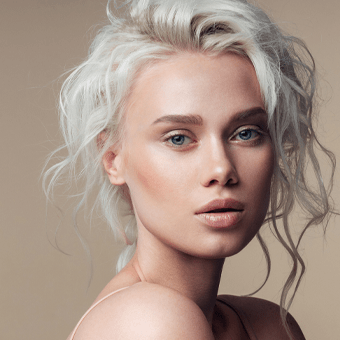
How do I avoid a sensitive scalp?
Turn down the temperature
First things first. We’re not saying go cold turkey on your warm relaxing baths to combat your sensitive scalp. However, one of the things that can increase your scalp’s irritation is hot water. When washing your hair, try to use lukewarm to cool temperatures and rinse your shampoo out as carefully as possible to avoid build-up. If you like heat styling then also consider turning down the temperature or skipping a few days to give your scalp the chance to breathe.
Less is more
When styling your hair it feels like you need to put as many products in as possible to maintain its health. However, this can do more harm to your scalp than good. Keep products such as gels and pastes to a minimum to avoid build-up and dryness, and instead opt for a few drops of argan oil or a lightweight lifting spray. The results? A cleansed scalp and hair ready for the day.
Brush gently
If you find tangles and troublesome knots in your hair, the temptation is to grab the first brush you can find and run it through your hair. While a quick fix, it’s time to consider changing your brushing routine if you start noticing a red scalp. The solution? Be gentle. When brushing with a comb or paddle brush, be sure to start from the bottom and comb downwards to ease the knots out. Work your way up towards the roots and avoid any tugging or pulling. Soon enough your scalp will thank you for it.
Our top recommendations for treating a sensitive scalp
Here are our top products to use for a sensitive scalp. Find out more on how to avoid a sensitive scalp.
The Maria Nila Head & Hair Heal Masque will cleanse your scalp and hair of any product build-up whilst also preventing itchy dandruff. Featuring anti-inflammatory properties, its 100% vegan formula includes proctone olamine and aloe vera extract to soothe your scalp and encourage healthy hair growth. When used with the rest of the Head & Hair Heal collection, your hair will be cleansed and strong from roots to ends.
If your scalp needs a soothing wash, the Lômé Paris Scalp Balancing Shampoo will be perfect. Enriched with strengthening keratin and calming chamomile, it gently cleanses your hair while balancing the scalp. The results? Fresh hair that looks and feels clean all over.
Offering a feast for the senses, the Paul Mitchell Tea Tree Special Shampoo will rid your scalp of all impurities while leaving your hair filled with life and lustre. What’s the secret? Its soothing formula including tea tree oil, peppermint and lavender. Featuring the range’s signature tingle, this cleansing and 100% vegan shampoo invigorates your scalp and leaves your hair with a fresh finish.
What are the benefits of products containing tea tree oil?
Dandruff prevention
If you’re tired of getting those little flakes in your hair then tea tree oil can really help. Why? It fights the fungus that causes dandruff and also helps to eliminate unwanted bacteria. Not only will it cleanse your hair, but it will also prevent any further breakage caused by dandruff.
Cleanses Scalp
From shampoo to pollution, our hair is exposed to a lot of chemicals that cause our scalp to become itchy and irritated. However, a tiny amount of tea tree oil is enough to prevent chemical and dead skin build-up on your scalp. Why? Its antibacterial properties will leave your scalp looking and feeling cleansed.
Supports hair growth
Excess oil and pollutants in your roots can clog the follicles and prevent their natural growth. If your hair is prone to grease and you want to grow long flowing locks, tea tree oil will be your hair’s best friend. Why? Its antiseptic properties provide the essential nutrients and supplements to support hair growth.
